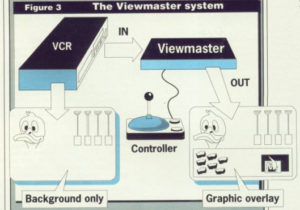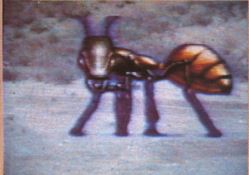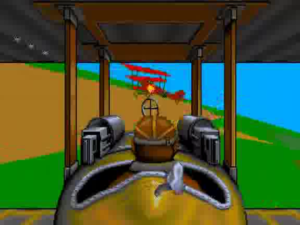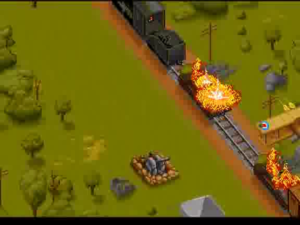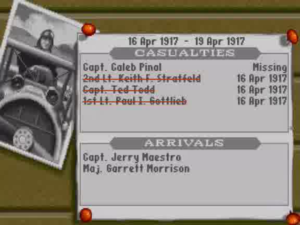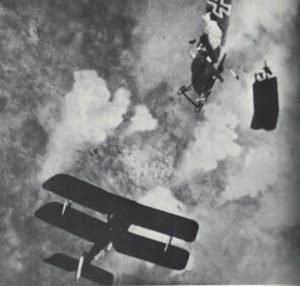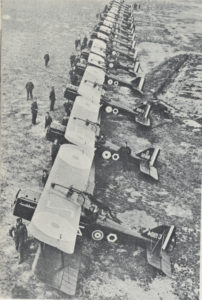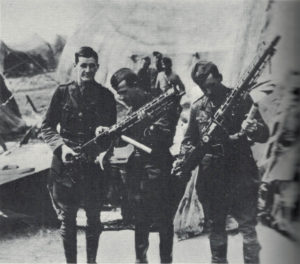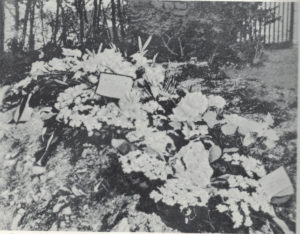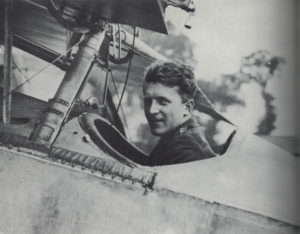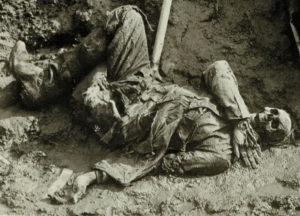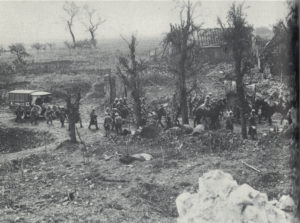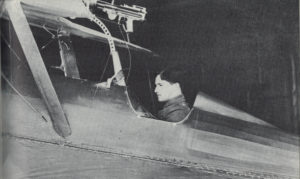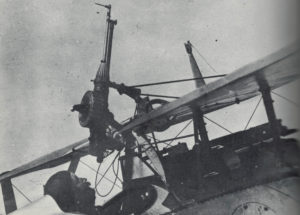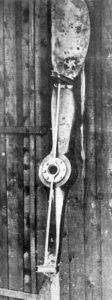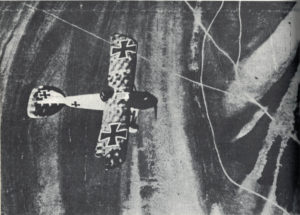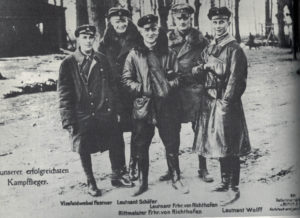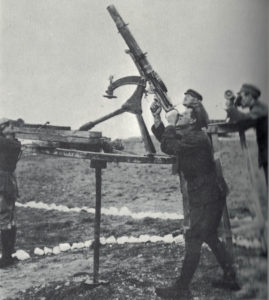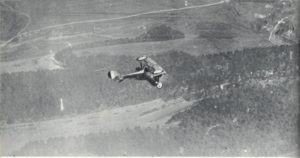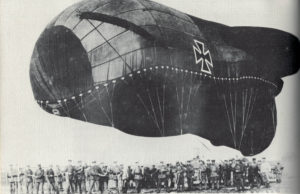The computer-game industry, like most young industries, was marked by ebbs and flows. Periodically, new advances in technology, new economic circumstances, and new consumer expectations led to the mass extinction of companies that had once seemed impregnable, even as new companies swept onto the scene to replace them. We’ve already seen one of these periods of transition: the home-computer bust of the mid-1980s that followed the first home-computer boom. Now, just five years later in historical time, we’re about to see another as the 1980s become the 1990s. Under the pressure of Nintendo, the American computer-game industry in particular was redefining itself yet again in terms of platforms, technologies, and modes of play. Inevitably, the disruption brought with it its share of casualties, including among them a number of companies we’ve come to know well in earlier articles. I’ve recently told the story of how the text-adventure specialists Infocom and (in Britain) Level 9 met their end when people largely stopped buying text adventures. Over the course of the next few articles, I’ll be writing about some other endings. Lest that sound horribly depressing, do know that the stories of these failures are not so much stories of companies that did too little as of companies that tried to do too much. For, as Neil Young told us, “It’s better to burn out than to fade away.”
Amidst the litany of mistakes Commodore made with their brilliantly innovative Amiga computer, it’s hard to choose just one as the most deadly to the platform’s long-term future. Certainly, however, their failure to push early and aggressively into CD-ROM must place near the top of any such list. With its 4096-color graphics and its stereo digital sound, the Amiga upon its release in 1985 already offered two-thirds of the equation that would lead to the so-called “multimedia-computing” boom of more than five years later. The only thing it lacked was a storage device capable of holding sufficient quantities of all those colorful graphics and sampled sound. The Amiga relied on 3.5-inch floppy disks that could hold just under 1 MB apiece, a generous number in terms of conventional programs and data but a pittance in terms of multimedia. Thus when Microsoft hosted the CD-ROM’s coming-out party in the form of the first CD-ROM Conference in March of 1986, few people were more excited by the new storage format’s potential than the nascent Amiga user base. “If you are wondering where [CD-ROM] leaves Amiga users,” wrote the Amiga magazine Amazing Computing in just their fourth issue, “it can be said in just three words: ‘in the pink!'” With its 650 MB of storage space, the CD-ROM seemed poised to unleash the Amiga’s true potential.
But, in what was already becoming a pattern, Commodore seemed blissfully unaware of any of it, playing no part in those early industry conferences and revealing no plans to capitalize on the new storage medium. Instead it was left to Microsoft with CD-ROM and Philips with their competing proprietary CD-I technology to be the chief impetus behind optical storage. The earliest CD-ROM products, designed as they were for the audiovisually hidebound IBM clones, filled their discs with huge amounts of text in the form of dictionaries, (text-only) encyclopedias, spelling checkers, thesauri, etc., all of which were important and innovative in their own ways. Yet, as everyone at the early CD-ROM conferences recognized, the really exciting potential of the medium lay in the emerging, as-yet unlabelled realm of multimedia computing that was the Amiga’s specialty. And yet Commodore did nothing. Even when both Apple and Atari released CD-ROM drives for the Amiga’s two most obvious direct competitors, the Macintosh and ST lines, they still did nothing. While Commodore fiddled, an incredible opportunity, born of Philips’s endless delays in getting a CD-based set-top box to market and the fact that no one other than Commodore had a reasonably priced computer with the audiovisual potential to do justice to CD-ROM-fueled multimedia computing, passed them by. When they finally did wake up in the new decade, it would largely be too late; they were now one of many in a market they could have owned.
Of all the Amiga game developers, the one that had the most cause of all to be frustrated by Commodore’s disinterest in CD-ROM was Bob Jacob’s Cinemaware, who throughout their existence would remain both the developer most closely identified with the platform and, not coincidentally, the one that pushed most aggressively to turn their games into true interactive multimedia experiences. Cinemaware’s “interactive movies” made a name for themselves by surrounding their fairly simplistic core game play with animated cut scenes, sampled sounds, and cinematic scores. Unfortunately, the amount and fidelity of all of this that Cinemaware could include was sharply limited by the floppy disks on which they had to distribute their games. With hard drives far from commonplace peripherals on the Amiga, especially in Europe — another situation that was largely thanks to a complete lack of initiative from Commodore — Jacob felt compelled to design his games with a floppy-drive-only Amiga system in mind. In an effort to minimize the disk swapping that could all too quickly get completely out of control with such a setup, he set an upper limit of two disks for each interactive movie. (He would bend from that standard only once, for It Came from the Desert, the 1989 production which was by many measures Cinemaware’s most ambitious completed game ever, and which was therefore allowed to spill onto a third disk.) Even with Cinemaware’s compression technology, with which they tinkered endlessly to try to get a few more pictures or sounds on each disk, only so much content could be fit onto two floppies. And almost worse for Cinemaware than the disks’ limited capacity was the speed, or rather lack thereof, of the Amiga’s floppy drives. The need to constantly shovel all that data in and out of memory from floppy disk played havoc with the sense of cinematic flow which Cinemaware worked so hard to achieve. One spent almost as much time staring at a blank screen as one spent actually playing or watching a Cinemaware game, waiting always for that next sequence to load from the chunka-chunking disk drives.
For these reasons, already by 1988 Jacob was actively looking beyond an Amiga platform that was left stuck in a veritable technological stasis by Commodore’s inaction, looking toward the platforms of the future that would allow his vision of multimedia gaming to truly come to life. It was during that year that a company called the Ideal Group came to his attention with a gadget called the View-Master Interactive Vision.
Interactive Vision was one of many attempts during this period, all of them highly problematic in hindsight, to turn the VCR, which had exploded into ubiquity over the course of the 1980s in exactly the way that the home computer so conspicuously hadn’t, into a device capable of hosting interactive content. Like most such schemes, Ideal’s plan leveraged the so-called “vertical-blank interval.” Sixty times per second, the electron gun which painted the images unspooling from the videotape onto the television screen had to make its way from the bottom right corner of the screen, where each painting cycle wound up, back to the top left to begin painting a new frame. The section of the tape which passed beneath the read head of the VCR during this interval was normally simply dead space. Ideal, however, realized that they could place computer code into these gaps. The Interactive Vision unit itself, a very basic 8-bit computer, was connected between the VCR and the television to read and process this code, which could tell it to overlay simple graphics onto the conventional video unspooling from the videotape, letting the user play videogames superimposed over this video background. It was, in other words, essentially the same concept that lay behind many of the laser-disc-driven standup-arcade games that followed the huge success of Dragon’s Lair. [1]As a further method of fostering interactivity, the audio channel of an Interactive Vision videotape could contain two separate audio tracks blended together into one using multiplexing techniques. The Interactive Vision unit could then filter out one track or the other at the time of playback, giving designers a way to choose between two soundtracks, depending on the user’s input. Indeed, most of the very few Interactive Vision tapes released apparently relied almost entirely on this simple feature rather than embracing the technology’s full range of possibility, as Cinemaware’s Interactive Vision product did.
For all its similarity to the spawn of Dragon’s Lair, Interactive Vision was extremely limited in comparison to laser-disc-driven applications of the same concept, being bound to the absolute linearity of the videotape format. Recognizing its limitations, Ideal planned to market it as a children’s product, selling for no more than $120, rather than as a game console or a more generalized home-entertainment product like the Philips CD-I. Still, within that space they’d managed to negotiate a bevy of licenses to die for, including Sesame Street, the Muppets, and the classic Disney characters. Bob Jacob and Cinemaware also jumped aboard with enthusiasm when they were approached about making a showpiece game for the system. It was at this point that Jacob hired David Riordan, the former rock musician and current interactive-video pioneer whom we met in an earlier article, in the context of his later work on It Came from the Desert. He also contracted with another old friend of ours: filmmaker, animator, and puzzle-game auteur Cliff Johnson of Fool’s Errand fame.
Riordan, Johnson, and the rest of Cinemaware’s new “Interactive Entertainment Group” were assigned to work on a Disney game which was to be packaged with every Interactive Vision system. After much experimentation, they settled on a thirty-minute videotape featuring ten very simple mini-games, glued together and overlaid onto old Disney cartoon clips. Although its aesthetic goals and its target market could hardly have been more different, the end result wound up resembling nothing so much as Mel Croucher’s earlier Sinclair Spectrum-based multimedia art project Deus Ex Machina in terms of structure: that of a relentlessly unfolding linear program, the interactive elements formed to the constraints of the linear media that grounded them. Cinemaware called their take on the concept Disney’s Cartoon Arcade.

Disney’s Cartoon Arcade in action on the View-Master Interactive Vision system. The player is trying to solve a simple jigsaw puzzle to the right of the screen while cartoon clips play in the background.
Like all of the other efforts along these lines, Interactive Vision flopped, vanishing into the marketplace without a trace. For his part, Dave Riordan judged that “the trouble with the View-Master system was that it was sold as a toy. It got lost on the shelves among the racing cars and the dolls.” Whether that was indeed the problem or whether the system was, as I rather suspect, simply too obviously jerry-rigged a system to have any consumer appeal, the work Cinemaware did with Interactive Vision set a pattern for the second half of the company’s existence. Widely perceived though his company continued to be as the premier Amiga developer, Jacob continued to look beyond that platform in the service of his larger vision of interactive movies as the future of mainstream entertainment. Simply put, if Commodore wasn’t interested in forwarding that vision, he would find partners that would. Riordan’s Interactive Entertainment Group, not disbanded but rather expanded in the wake of Interactive Vision’s failure, would drive these expensive and uncertain forays into emerging technologies, while the rest of the company paid the bills by continuing to make and market games on floppy disk for the Amiga and other traditional home computers.
Working now without Cliff Johnson, who had signed onto the Interactive Vision project only as an outside contractor, Riordan’s future projects would replace VCRs with optical media. Like so much of the American games industry, Cinemaware had first latched onto Philips CD-I as the optical-storage format of the future. “When CD-I is a reality,” Riordan said, “I think Cinemaware will have a field day with the technology and bring our dream to life with real people, soundtracks, and dialog.” But, again like the rest of the industry, Cinemaware eventually found Philips’s endless delays, along with their platform’s technical limitations in the all-important realm of video playback, to rather take the bloom off the rose. “I’m no longer as high on CD-I as I once was,” Jacob was saying already well before the end of 1988. “You can design around [the limitations], but it’s not really enough.”
With talk of new optical formats everywhere, Cinemaware had no more of a clue than anyone else as to which one(s) would win out. So, they decided to try to support them all, by developing a process within the Interactive Entertainment Group to release new products on a whole range of formats as they appeared. “Someday, somewhere, people are going to invent a very compelling interactive technology, a mass-market entertainment medium that will bring parents and children into a mass-market application,” Jacob said. “I don’t know which hardware system is going to win, but once we’ve developed an interactive design methodology we can shoot material and use it across all formats.” He envisioned Riordan’s group as “a training ground where the methodology of interactive games can be developed and refined, ready for the arrival of the appropriate technology.”
Going back to Cinemaware’s roots, Riordan’s group made a CD-ROM version of Defender of the Crown, still by far the company’s biggest hit ever, for MS-DOS machines. Almost entirely forgotten today, this first CD-ROM version of Cinemaware’s most iconic title marked just the second game ever released on the medium in North America, trailing Mediagenic’s CD-ROM version of The Manhole for the Macintosh onto store shelves by mere days. In many ways, the CD-ROM Defender of the Crown was a more complete demonstration of the future of computer gaming than that other optical landmark. While the graphics and game play remained largely the same as the Amiga original, Riordan’s team added a soundtrack performed by an actual orchestra recorded in an actual studio — a first for the games industry — along with voice actors playing the narrator and many of the characters. Riordan:
It’s the audio that’s the key. Take someone talking, for example, the intonation in their voice is what really gives the words meaning. Reading text is nothing — but you can say, “I hate you,” in so many different ways, and even make it sound like “I love you.” Or, to take another example, imagine watching a scary movie without music. The music tells you so much about what’s going on. Without it, it’s just not scary at all — and when it comes to games I want people to really back off from the screen!
For Amiga stalwarts, seeing Jim Sachs’s classic graphics, now made possible in full fidelity on MS-DOS by the emerging VGA graphics standard, up there on the screen alongside all the impressive new audio marked a bitter moment indeed, about as clear a measure as could be imagined of just how far their chosen platform had already fallen behind the cutting edge. Granted, with CD-ROM drives still vanishingly rare on everyday machines, this first-ever CD-ROM-based game for MS-DOS was almost more a demonstration of intent than a serious commercial product for Cinemaware — a situation which doubtless does much to explain its obscurity today. It did, however, become the basis for ports to some of the other CD-based platforms that began to appear over the next couple of years, while the techniques that went into making it became the basis of the BOLT unified development environment that was used to make Cinemaware’s arguable best game for the Amiga, It Came from the Desert.
By far the biggest project Cinemaware was ever able to bring to any sort of fruition, It Came from the Desert was also unusual in being the only one to unify the two halves of the company’s latter-day identity. Riordan’s team first produced the floppy-disk-based Amiga version, doing an unusually good job of working within that setup’s limitations to make a really interesting, playable game of it. After completing that version, they moved on to a CD-ROM version that for the first time would feature video clips with real actors — thus beginning to dig the “full-motion-video” rabbit hole down which much of the industry would scurry for the next half-decade or so. Always the optimist, Riordan claimed that many name actors were interested in starring in interactive productions, if Cinemaware could just prove to them the form’s commercial potential. “They saw what happened with VCRs,” he said, drawing an appealing but perhaps flawed comparison, “and how they made more money from the video releases than they did from the original movies. Now they’re watching out closely to see what happens with computer games. We may get big names very soon for games.” In the meantime, Riordan used his connections in Hollywood to recruit a troupe of unknowns, who played their roles in front of green screens that would later be turned into computer-generated backgrounds. And, turning the process on its head, Riordan’s team also experimented with overlaying their graphics of giant ants onto filmed backgrounds.
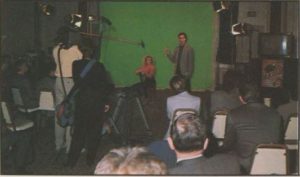
Shooting It Came from the Desert on a soundstage. Such scenes would become very familiar ones within the games industry in the several years to come; this was ground zero of the whole full-motion-video craze.

A closeup of the actors in front of the “green screen.” They were filmed using a Betacam — the world was still a long way from going all-digital — with a filter that blocked the green. The result, as long as no one wore green, was a set of disembodied figures ready to be digitized with a frame grabber and superimposed over a computer-generated background. Call it a very, very primitive form of CGI.
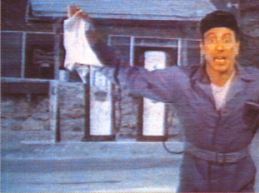
The end result. Unfortunately, because of the limitations of the NEC TurboGrafx-16’s display hardware, the only released version didn’t look anywhere near even this good.
By 1990, when the Interactive Entertainment Group was in full flight with the full-motion-video It Came from the Desert, the Amiga market in North America was going soft. Thankfully, though, the platform’s continued vitality in Europe more than made up for it; thus Cinemaware’s bread-and-butter interactive movies continued to do quite well on the whole. Meanwhile the company continued to branch out into other areas within the realm of traditional computer games, roaming increasingly far afield from their alleged specialty. Already in 1988 they had embarked on their hugely influential TV Sports line of games that simulated the broadcast of professional sports like football and basketball rather than the experience of the athletes themselves. Around the same time, Jacob had leveraged his strong relationship with his European publisher Mirrorsoft to begin importing popular European action-oriented Amiga titles into North America. He was soon signing deals to publish original games that had even less to do with his company’s usual focus. For instance, having made Cliff Johnson’s acquaintance through the Interactive Vision project, he published 3 in Three, the follow-up to The Fool’s Errand, under the Cinemaware label after Miles Computing, Johnson’s prior publisher, went bust. (Abandoning the storybook aesthetic of The Fool’s Errand for an approach derived from the avant-garde animated films Johnson loved dearly, 3 in Three just doesn’t work for me like its predecessor does; it has some brilliant moments, but has too many repetitive puzzles of the least interesting types, lacks an equally compelling thoroughgoing meta-puzzle, and generally frustrates more than it delights.) Departing even further from what people had come to expect from Cinemaware were the two Star Saga games partially designed by Andrew Greenberg of Wizardry fame. These were elaborate and demanding multiplayer hybrids of tabletop RPGs and computer-based entertainments built around “paragraph books” with hundreds of pages of text — this from a publisher founded on the philosophy of “no typing, get you right into the game, no manual.” Unsurprisingly, the Star Saga games flopped resoundingly for Cinemaware, as they had for Masterplay, the tiny publishing venture Greenberg had originally set up to market them.
Whether one considers all these side ventures a dilution of Jacob’s vision or simply smart diversification, Cinemaware’s traditional computer games, while certainly not all hits (witness: Star Saga), were profitable in the aggregate. They just weren’t anywhere near profitable enough to pay for Cinemaware’s ambitious cutting-edge experiments. Projects like the full-motion-video It Came from the Desert were horrendously expensive in comparison to virtually anything the games industry had ever tackled before. Scoring a soundtrack and recording a real orchestra performing it, for instance, must cost at least $10,000 per track when all was said and done. Even the unknown actors employed by Cinemaware for It Came from the Desert cost about $500 per day per actor, far more than the salary of the best programmers or graphic artists. And then there were the costs of film crews, soundstage rentals, etc. Cinemaware’s debt began to mount alarmingly as they outspent the profits from their traditional games by huge margins. Bob Jacob and Dave Riordan had their hearts in the right place, but the reality remained that they had pushed the company into a dangerous position, well ahead of even the bleeding edge of the consumer marketplace. They were investing money they didn’t have in games that almost no one had the equipment to actually play.
For understandable reasons, then, Cinemaware looked with more and more wistfulness toward Japan, a nation that seemed by many metrics to be doing a much better job turning the ideal of multimedia computing into practical consumer products than any Western nation. On March 14, 1990, Jacob announced that the Japanese firm NEC, maker of computers and game consoles, had purchased approximately a 20 percent share of Cinemaware and with it a seat on the company’s board of directors. NEC had recently begun importing their very successful domestic game console, the PC Engine, into North America as the TurboGrafx-16. While it wasn’t actually doing all that well there at the moment in the face of stiff competition from Nintendo and Sega, NEC believed they had an ace up their sleeve that would make the partnership with Cinemaware a natural fit: a CD add-on, the first of its kind for a console, that NEC was planning to bring Stateside that summer. The CD-equipped TurboGrafx-16, they confidently expected, would be the realization at last of everyone’s old dreams for Philips CD-I. And when it dropped and took the market by storm, Cinemaware would be there to reap the rewards alongside NEC. In tandem with the stock purchase, Cinemaware and NEC signed an agreement to make Riordan’s in-progress full-motion-video version of It Came from the Desert, previously envisioned as a platform-agnostic product, a TurboGrafx-16 CD exclusive.
It all went horribly wrong. The first problem was the console itself, which was built around an 8-bit CPU derived from the venerable old MOS 6502, a chip with the merest fraction of the computing power Cinemaware had expected to have at their disposal for the full-motion-video It Came from the Desert. The puny CPU meant that Cinemaware had to simplify the gameplay dramatically over the floppy-based Amiga version, while a display capable of only 512 colors meant they had to degrade the graphics into a clashing melange of vague outlines. And then the TurboGrafx-16 CD add-on hit the market and proceeded, like the console before it, to sell hardly at all in a market that already had Nintendo as the dominant force and Sega playing the role of the plucky upstart. Cinemaware had spent at least $700,000 on a game they couldn’t sell, whether on the moribund TurboGrafx-16 or, thanks to the exclusive deal they’d signed, on any other platform. Expensive TurboGrafx-16 ports of TV Sports: Football and TV Sports: Basketball and another fruitless exclusive in the form of TV Sports: Hockey were almost as damaging, leaving Cinemaware drowning under the debt they’d run up in making them. Nor was NEC all that supportive of their partner. Jacob claims that the entire American management team that had handled the disastrous introduction of the TurboGrafx-16 and its CD add-on, as well as negotiated the deal with Cinemaware, was “summarily fired” in the aftermath of the console’s failure. With no prospect of a bailout from NEC, “all of a sudden we were in very bad straits.”
Indeed, Jacob describes his decision to do the deal with NEC as nothing less than Cinemaware’s “downfall.” Distracted and financially pinched by the TurboGrafx-16 projects, Cinemaware released only one of their Amiga interactive movies in 1990. Wings, the ninth and, as it would transpire, the last of the line, did well enough in the Amiga’s stronghold of Europe, but neither it nor the rest of Cinemaware’s catalog could sustain a company so intent on throwing good money after the bad of the TurboGrafx-16.
As 1990 came to a close, Jacob had no choice but to search for a buyer to rescue Cinemaware. He spent some time in talks with Columbia Pictures, trying to convince this storied cinematic giant of the bright future of interactive cinema, but ultimately without success. He then danced for a while with Electronic Arts, already Cinemaware’s North American distributor. That looked more promising; Trip Hawkins and most of his senior staff were supposedly in favor of the deal, but a newly empowered board of directors — Electronic Arts had gone public in October of 1989 — nixed it. Cinemaware entered 1991 with debts in excess of $1 million, a huge burden for a company that employed less than forty people. Although Cinemaware needed more, not less staff to bring his vision of CD-ROM-based interactive movies to fruition, Jacob had no choice but to begin laying people off. The death spiral had begun; Cinemaware now lacked the manpower to complete any of the games that might otherwise have saved them.
Jacob dissolved Cinemaware that summer, auctioning off its technologies and licenses to the highest bidders. Among the late projects that would never come to fruition was the dubious proposition of a TV Sports game called Rollerbabes, tackling the thriving — or rather not — sport of roller derby. There was also a cowboy western, envisioned as another big interactive-movie production. The inevitable TV Sports: Football II fell by the wayside as well, while perhaps the most ambitious of all the axed projects was a spy caper called The Enemy Within that Jacob still insists would have “redefined gaming as we know it.” “The game was so far advanced in concept,” he claims, “that its basic creative core still has not been achieved” — whatever that means.
Mirrorsoft, Cinemaware’s longstanding European partner and publisher, wound up acquiring most of the company’s assets, including the name itself. In this state of affairs, Jacob saw opportunity. He moved to Britain and tried to restart Cinemaware, after a fashion, under the name of Acme Interactive, using many of the old Cinemaware properties and licenses, leased back to him by Mirrorsoft. But within a year or so, Acme was acquired by the comic-book publisher Malibu Graphics, where Jacob’s people were combined with new hires to form Malibu Interactive. After a couple of years of modest success on consoles like the Sega Genesis and Super Nintendo, Malibu Interactive in turn was shut down after their parent company was acquired by Marvel Comics. None of the games that arose out of Jacob’s post-Cinemaware operations were as ambitious or innovative as the games he had made before, and following the Malibu shutdown he went back to his pre-Cinemaware role as a talent agent for the games industry.
What, then, shall we say in closing about Cinemaware? From a business standpoint, Bob Jacob obviously pushed his small company too far too soon, and paid the price for it. Rather than rake him further over the coals, it should suffice on that score to simply acknowledge that mistakes were made. A more interesting question is that of Cinemaware’s creative legacy. Jacob cites modern games like the Call of Duty and Assassin’s Creed franchises as being heirs to the work done at Cinemaware in that they are “movie-like experiences.” “At the time, if people asked if Cinemaware was a genre,” he says, “I would say, ‘No, Cinemaware is the future. Cinemaware is where games are going.’ And ultimately, I was right.”
But was he really? To some extent perhaps, but far from entirely. Cinemaware was the first and for some time the most aggressive proponent of one view of the future of interactive entertainment, a view which by the early 1990s — ironically just as Cinemaware was dying — had become that of the American computer-games industry as a whole. It’s a view that we’ve already seen from various angles, and one that we’ll continue to see again and again as we move through this period of gaming history. The future, it claimed, would see conventional computer graphics take a backseat to a rich multimedia environment, a blending of digitized pictures, digitized video, digitized sound, and digitized music sourced from the real analog world that surrounds us. Although Cinemaware’s best-remembered games, their Amiga interactive movies, used decidedly limited amounts of all four, it was always understood within the company that this was due only to technical limitations. Dave Riordan actually labelled computer graphics as the primary thing limiting the mainstream appeal of games, drawing a comparison to cartoons, which, while popular then as they are now in their sphere, were nowhere near as popular as live-action film and video. Graphics, he said, could only “approximate reality”; “regardless of how interesting, they are not actual life.” Jacob said that “you’ve got to have a video look if there’s going to be a mass market. Computer graphics will not be acceptable to a market that’s been weaned on television. If you make it look like television and make it interactive, it’s going to work.”
Well, it largely didn’t work, although it would take the industry until some years beyond the death of Cinemaware to fully realize that. Full-motion video brings with it heaps of limitations in the types of interactivity games can support. We’ll have plenty of opportunities to delve into what those limitations are and the effects they had on games of this period in future articles, as we continue to explore this fraught but fascinating period in gaming history. For now, though, suffice to say that the limitations existed in spades, and that the optimism of proponents like Jacob and Riordan depended on minimizing or dismissing them to an unsustainable degree. Even during their day, Cinemaware became a poster child in some circles for what happens when presentation is emphasized over game play. And in the years since the company’s passing, the genre of full-motion-video games for which they paved the way have gone on to become perhaps the most critically reviled lineage in all of gaming history.
Jacob’s vision of the future of games as a business proposition, being predicated on his flawed vision of their aesthetic future, proved equally flawed. “There will be a new industry,” he said, that would combine “the music, movie, and software industries.” While intersections have certainly abounded, in the big picture this too just hasn’t happened.
Still, Bob Jacob, Dave Riordan, and Cinemaware weren’t by any means entirely wrong about the future. Their sense of cinematic flair did have a major influence on games that came well after the full-motion-video era, while digitized sound and music, not being subject to the same crippling limitations as digitized video, has long since all but completely superseded synthesized sound in games. Ironically for such a determinedly visionary company, their greatest failure might have been a failure of vision: a failure to realize that the public would willingly accept videogames as their own thing, entirely separate from film or television, if they were presented in an appealing, accessible way as their own thing. When it comes to the question of computer graphics versus full-motion video… well, the best graphics have gotten so good by now that it’s hard to tell the difference, isn’t it? Today Cinemaware’s interactive movies, like so many of the productions from other developers that would immediately follow them, read like dispatches from the past to a future that never arrived, as incongruous as the Jetsons-like automotive stylings of the 1950s. So, Bob Jacob was right even as he was wrong; games would go on to become both less and more than he ever imagined.
(Sources: Commodore Magazine of November 1988; Questbusters of October 1989, June 1990, March 1991, and July 1991; Computer Gaming World of March 1990 and May 1990; The One of October 1988 and November 1988; ACE of November 1989, April 1990, and May 1990; New Scientist of July 1989; PC Magazine of July 1989; CU Amiga of March 1990, August 1991, and May 1992; Raze of January 1991; The Games Machine of March 1990; The One of August 1991; Zero of April 1991 and July 1991; Amazing Computing of May 1986; the 1990 episode of Computer Chronicles entitled “Video Game Consoles.” Online sources include interviews with Bob Jacob by Matt Barton, Tristan Donovan, and Zach Meston. Finally, there’s my own interview with Cliff Johnson. Thanks again, Cliff!)
Footnotes
| ↑1 | As a further method of fostering interactivity, the audio channel of an Interactive Vision videotape could contain two separate audio tracks blended together into one using multiplexing techniques. The Interactive Vision unit could then filter out one track or the other at the time of playback, giving designers a way to choose between two soundtracks, depending on the user’s input. Indeed, most of the very few Interactive Vision tapes released apparently relied almost entirely on this simple feature rather than embracing the technology’s full range of possibility, as Cinemaware’s Interactive Vision product did. |
|---|
